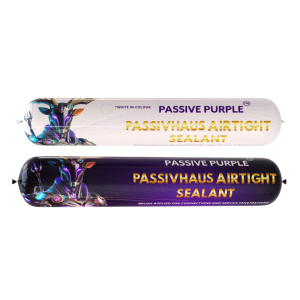8107
Does Natural Ventilation Actually Work?
Written by
Natural ventilation is a method used in construction for many centuries and is present even in historical buildings. In modern day construction, ventilation is still a very important factor.
Sufficient ventilation is the key to protecting your building from dampness and ensuring the air quality inside is good. However, letting air flow through your building, or better yet, creating a breathable structure without losing heat and energy is a tricky task.
For all of you wondering “Does natural ventilation work?”, the short answer is not really.
Although it’s an easy way to let air filter through the building, there are many flaws with this type of ventilation.
In the article we’ll cover the theory behind passive ventilation and its setbacks.
What is Natural Ventilation?
The passage of air between the outside and inside of a building is what we call natural ventilation. This can be achieved without any mechanical help through vents and openings in the structure of a building.
This simple concept has been around for centuries, utilised to keep a healthy and comfortable indoor environment in our homes.
How Does Natural Ventilation Work in Theory?

There are two natural forces behind passive ventilation. The first one is the pressure difference caused by the wind. The second is the natural air movement due to temperature variations or so-called “chimney effect”.
In theory, because of the temperature difference the dirty, warm air rises upwards, while the pressure difference forces it out through openings in the roof.
With optimal climate conditions, this is actually a very effective substitute for air conditioning that can help reduce energy usage. It can also help improve air quality.
What is the Reality?
Since it mostly relies on the natural passage of air and pressure/temperature differences, natural ventilation is hard to control. Certain factors such as local climate and current weather can also obscure its efficiency.
Natural ventilation is found to be more effective in places with dry and more consistent climate. In countries like the UK, where the air is damp all year round and there are major temperature fluctuations between seasons, it might not be the best solution.
In places with seasonal climate any openings in the building will lead to massive loss of energy. With modern construction practices focusing more on making a building air tight to prevent the loss of heat, it’s easy to see why this method of ventilation isn’t ideal.
What are the Common Issues with Passive Ventilation?
As mentioned above, there are a few limitations with this type of ventilation that make it ineffective in a lot of settings. Here are some of the most common ones:
- Airflow Issues
One of the most notable downsides of natural ventilation is the inability to control airflow. For this type of ventilation to be completely functional a lot of consideration needs to be put into differences in pressure as well as the paths that air goes in and out of.
The functionality of this type of ventilation system is heavily dependent on external conditions. In areas with seasonal changes in the weather this method of ventilation can be sub-par efficient.
- Temperature and Energy Loss
Since your building is directly open to the outside air, you can suffer from significant heat and energy losses. In areas where it gets very hot in summer and cold in the winter, this can be a particularly significant issue.
Any openings in a building will allow air to escape, leading to wasted energy.
So How do You Let Air in Without Losing Energy?
Modern building practices are focused on sustainable construction. This means minimising the lost energy and heat, while protecting the structure from dampness.
So how do you achieve this?
Here at Intelligent Membranes, we have mastered the way of creating breathable buildings, by creating a solution that ticks all boxes.
Using our experience working in the construction industry, we created our line of liquid membranes.
Our vapour control layers, air tightness membranes and waterproof breathable membranes protect your building inside and out, while allowing air to pass through.
This creates a perfectly breathable structure, preventing excessive moisture from sitting in your walls.
We also offer specialised products to help protect openings such as doors and windows.
Browse our full range of products today and place your order!
Written by
Passive Purple Editions
-

Passivhaus Airtight Sealant – 600ml
Enquire Now Below From £12.00 + VAT Select options This product has multiple variants. The options may be chosen on the product page

